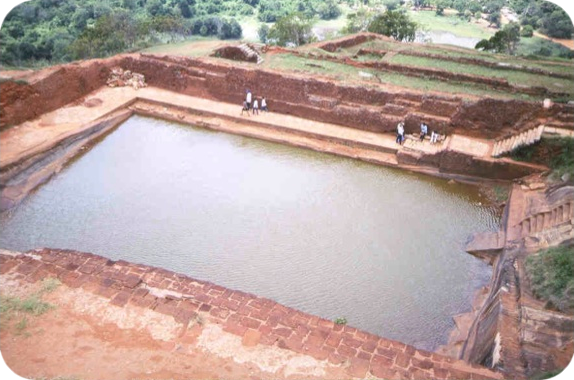Application: Aquifers, bore well/ dug well, buildings, farms, houses, markets, reservoirs
Description: Rainwater harvesting with a land surface catchment is a technique that provides more opportunity for collecting rainwater and stormwater from a larger surface catchment area in comparison to a rooftop catchment technique. The land surface catchment technique varies from small scale to large scale reservoir rain harvesting systems depending on the geographic area and engineering design techniques. It can be designed with low cost earthen dams, dykes and canals to collect and storage the water. The dams are constructed at the lower part of the catchment or reservoir areas to retain the flows of small creeks and streams and surface water runoff in the storage reservoir system. The sluice gate of the canal is an important component of the system. It helps to retain the water, and discharge it if overflowing in order to manage flooding downstream and upstream in the catchment. The harvested water can be used as a water resource for agricultural purposes, livestock, and domestic use with proper treatment. It can also be used as drinking water, longer-term storage and to recharge bore wells or dug wells and groundwater.
Contribution to climate resilience: Rainwater harvesting ponds improve drought resilience by increasing the availability of water for agriculture, livestock, and household uses such as washing and laundry. They store water during heavy rainfall in the wet season and reduce scarcity during the dry season - both events likely to become more severe with climate change. Rainwater harvesting ponds are particularly suited to households which cannot install rainwater tanks due to sloping land or geographical isolation.
Supplementary sources of information:
http://www.fao.org/docrep/R7488E/r7488e00.htm#Contents
http://www.unwater.org/downloads/Rainwater_Harvesting_090310b.pdf
http://www.unep.or.jp/ietc/Publications/Urban/UrbanEnv-2/3.asp
http://www.gdrc.org/uem/water/rainwater/introduction.html
Background image credit: https://commons.wikimedia.org/wiki/File:Rainwater_Harvesting_and_Plastic_Pond_2.JPG
This resilience-building measure is sourced from the Water Resource Adaptation Guide (2019) published by the National Council for Sustainable Development at the Ministry of Environment in Cambodia. The full Guide is available to download at URL https://ncsd.moe.gov.kh/sites/default/files/2019-10/Water%20Resources%20Adaptation%20Guide_March%202019_En.pdf


